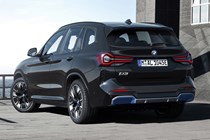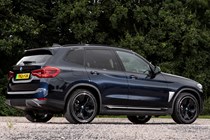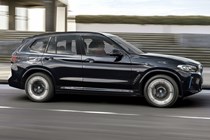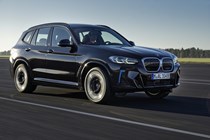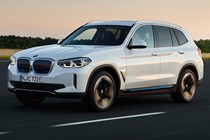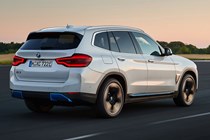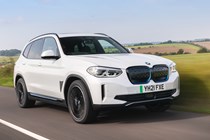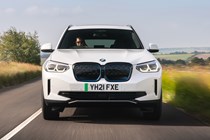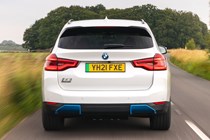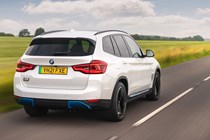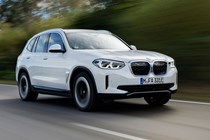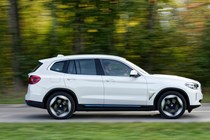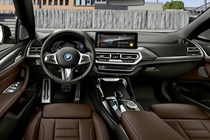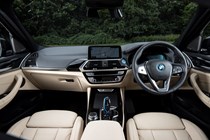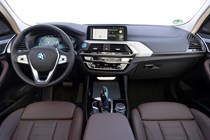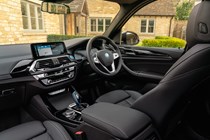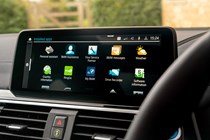
BMW iX3 SUV (2021-2024) running costs and reliability
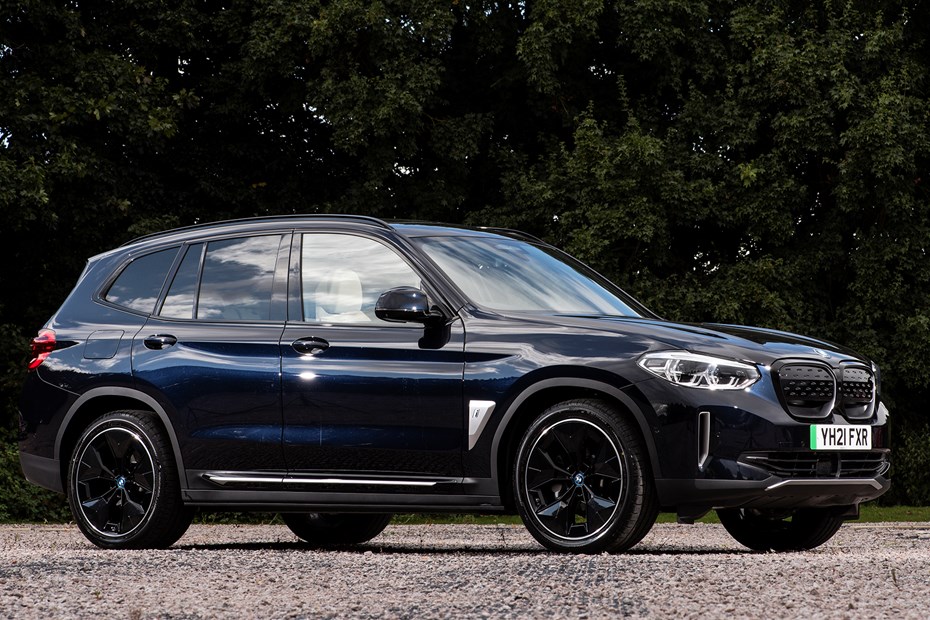
Miles per pound (mpp) ⓘ
| Electric motors, home charging | 9.7 - 10.3 mpp |
|---|---|
| Electric motors, public charging | 5.2 - 5.6 mpp |
Fuel economy ⓘ
| Electric motors | 3.3 - 3.5 miles/kWh |
|---|
- High list price
- Decent EV range
- High-voltage charging offered
What are the running costs?
The BMW iX3 is quite expensive to buy when compared with the rest of the X3 range – and indeed some of its electric SUV rivals – but this is offset by its low EV running costs. It has a large 80kWh battery – of which 74kWh is used – and has an official 285-mile range. That range depends on a variety of factors, but can be increased by making liberal use of the regenerative brakes (which harvest energy when slowing down). In testing, we managed an easy 230 miles before being pushed into plugging the car back in.
That official 285-mile range is further than a Mercedes-Benz EQC can go, but not as long as the Tesla Model Y or some versions of the Audi Q4 E-Tron. The BMW’s range is helped by the fact that the iX3 is two-wheel drive, with the rear-mounted electric motor powering the back wheels. The lack of four-wheel drive helps to offset the weight of the car’s 80kWh battery.
Charging can be done at a rate of up to 150kW, and if you plug into a suitable DC charge point, then a 10-80% top-up can take as little as 27 minutes. A standard 7kW wallbox can replenish the battery in 12 hours, but the iX3 comes with an 11kW on-board charger, so can be recharged even faster if your home electrics have been suitably upgraded.
Servicing and warranty
As with all BMWs, the iX3 comes with a three-year unlimited mileage warranty. However, BMW also adds a Mobile Care package to its EV warranty. This gives owners direct contact with BMW Roadside Assistance from within the car’s Connected Drive menu, and can help to diagnose problems and send assistance if necessary. In addition, BMW’s i models, including the iX3, come with additional protection for the high-voltage battery. This lasts for eight years or 100,000 miles, whichever comes sooner.
BMW cars run to a condition-based maintenance schedule, and this also applies to its electric ‘i’ models. In this instance, the iX3’s electronics will let you know when a mechanical part needs attention, firstly via a warning light on the dashboard, then with further information displayed within the car’s iDrive system. When this appears, it’s time to take the car for a service.
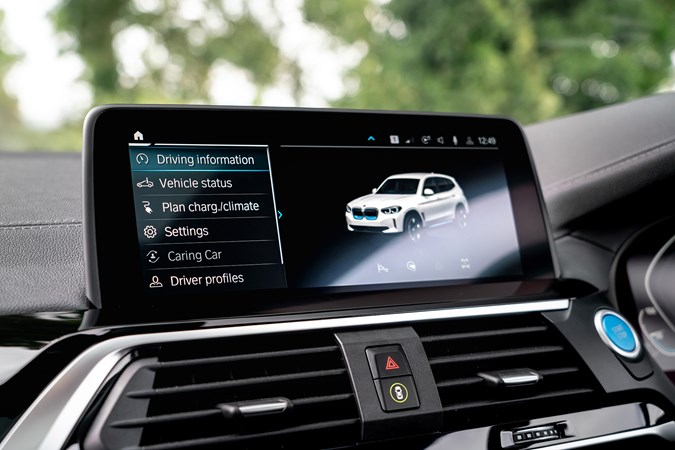
Reliability
- X3 has been recalled seven times
- But iX3 less of a risk
- Fewer mechanicals to go wrong
Since the iX3 is based on the X3, there are a lot of shared mechanicals under the skin. However, this isn’t all good news, since the X3 has been the subject of seven recalls since 2018. Five of the seven have been related to combustion engines, though, so won’t apply to the electric iX3.
The iX3 builds on EV technology that originally debuted in the BMW i3 – though battery density has increased and charging capacity has improved. It has moved on significantly from the ground-breaking small BMW electric car, having benefited from seven years of further development.
BMW says that the electric motor uses no rare metals in it, unlike other systems, and the system is 30% more efficient (denser battery packs mean more charge stored in a given space) than in the company’s existing EVs.
Ongoing running costs
| Road tax | £620 |
|---|---|
| Insurance group | 44 - 45 |
Get an insurance quote with

|
|



